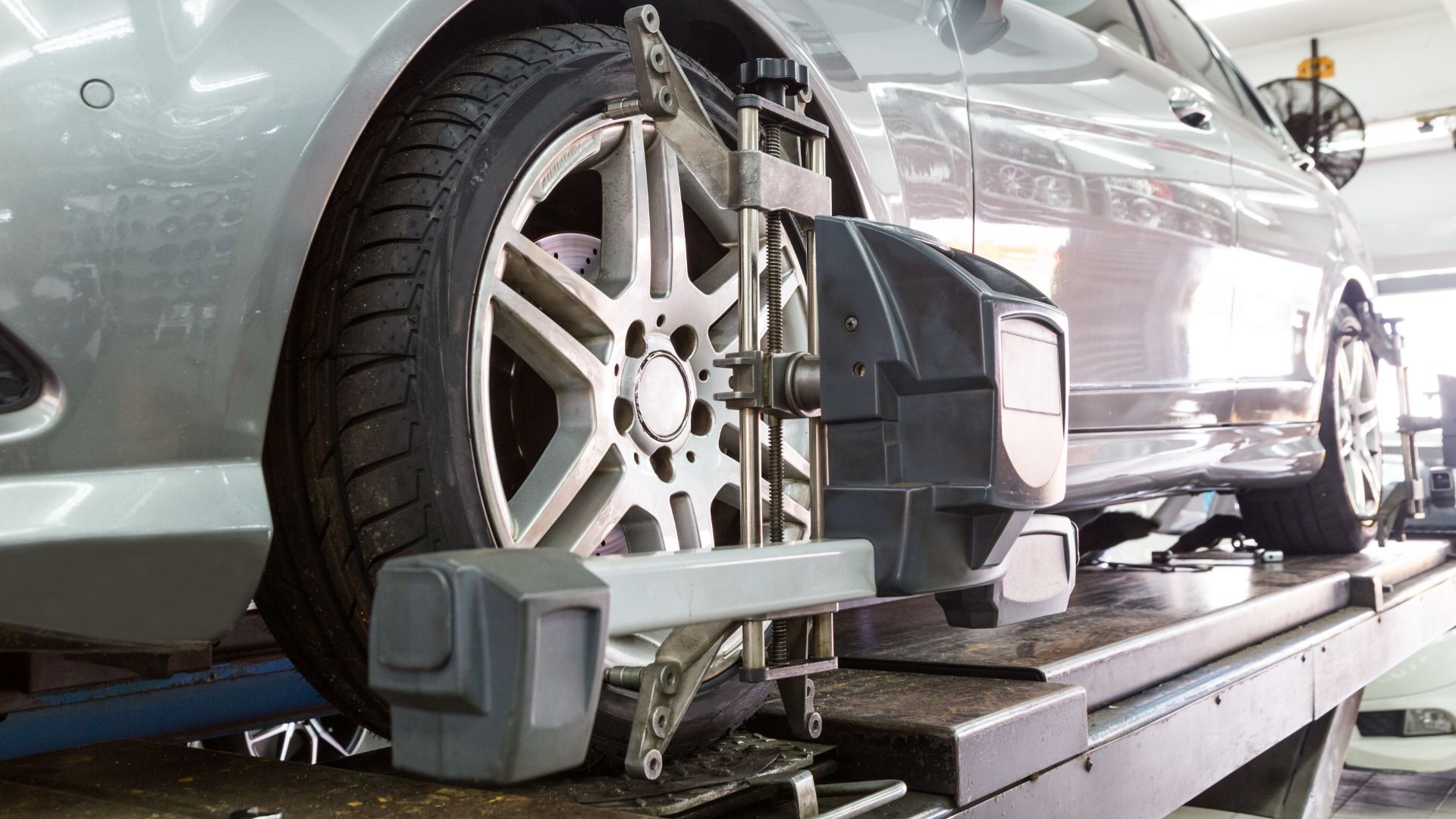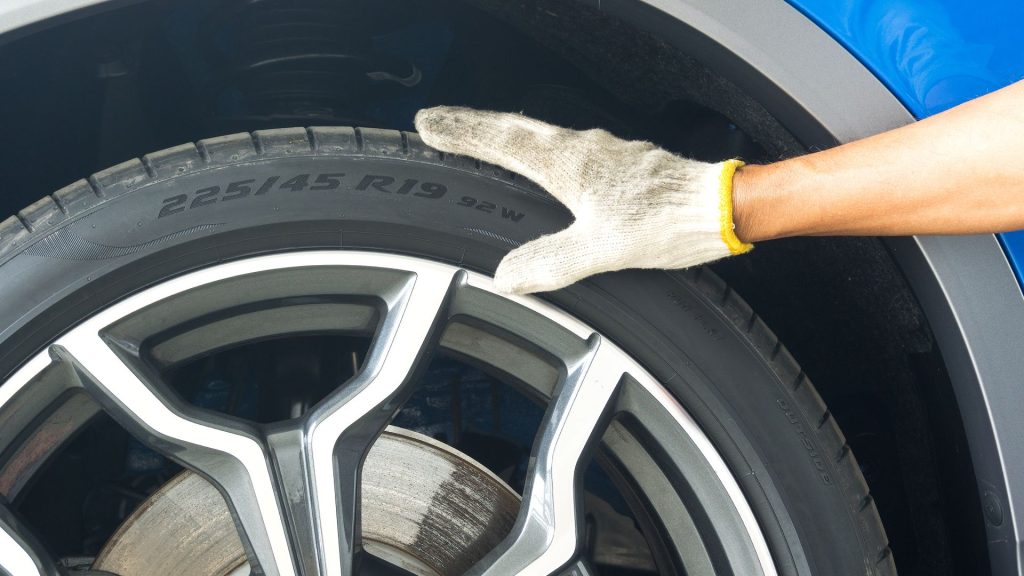How long does a tire alignment take?
Determine the time required for a tire alignment and how it impacts performance.

A tire alignment is one of the most crucial regular maintenance tasks needed to keep your car in proper condition. It is essential to have your wheels aligned at an auto repair at a specific interval or when signs of misaligned wheels show. This will make sure your car runs properly and safely.
If your wheels are misaligned, you are likely to notice a surprising drop in your car’s handling ability. It will continuously tilt in one direction while preventing the car from moving or turning in a straight line. This makes driving more difficult, reduces ride comfort, and can jeopardize your safety and that of other passengers.
Misaligned wheels can also lead to uneven tire wear, which means you will have to replace the tires frequently. Additionally, it can lead to damaged wheel rims and suspension which can, in turn, affect the performance and longevity of your car. Failure to realign your wheels regularly can cause you to spend more than necessary in the future. In this article, we will explore things you should know when having a tire alignment. We now know how important a tire alignment is, but the question is how long does a tire alignment take?
What is tire alignment?
Tire alignment is the process of adjusting your car’s suspension (the suspension connects your car to its wheels). Note that alignment does not involve adjusting the wheels or tires. Tire alignment is achieved by bringing the suspension system to its proper position while adjusting specific components. It’s commonly misplaced with the question of “how long does tire rotation takes“, but alignment and rotation aren’t the same.
A tire alignment requires the expertise of a professional mechanic and an alignment machine. Unlike some other vehicle maintenance, it is not advisable to carry out tire alignment yourself. The objective of a tire alignment is to square a vehicle’s wheels and axles with one another so that they can move in the same direction. This process involves the adjustment of all the suspension angles that have an impact on the tire’s movement and positioning while ensuring the steering wheel is perfectly centered.
The alignment type your vehicle needs depends on its suspension system and how it distributes power to its wheels. If you have a four-wheel drive or an all-wheel drive vehicle, you need to get a four-wheel alignment. In contrast, if your car uses a rear-wheel drive or front-wheel drive system, it requires a front-end or thrust-angle alignment.
Can a wheel alignment be done in 15 minutes?
Before you get to drive your car to a tire alignment expert, you may wonder – how long does tire alignment take? All things being equal, whether it is a four-wheel drive or a two-wheel drive vehicle, a tire alignment should take around one hour. If there is extensive wear and tear or damage on the suspension system, track rod, steering bushing, or other essential parts, it will take a longer time to align, as some components have to be replaced.
The wheel alignment takes at least 30 minutes to 1 hour, depending on the type of suspension system, how complicated the process is, and the adjustments required to get the correct angles. This time range is only for four-wheel alignment, and it does not include any suspension work such as replacing damaged components like the ball joint, centric groove, or steering bushing.
There is a complimentary process that is done alongside the wheel alignment; it is known as wheel balancing. Wheel balancing takes anywhere from 40 minutes to 2 hours. It is enough time to balance the wheels with the correct measurements using a proper machine.
How urgent is a wheel alignment?

It is important that your vehicle undergoes wheel alignments regularly. Getting a wheel alignment will avoid future damage that could arise as a result of misaligned wheels, which could result in a decrease in your car’s handling ability. It is a very crucial task that shouldn’t be overlooked.
Driving without a wheel alignment increases the risk of tire damage and accidents. A regular wheel alignment will prolong the life of a vehicle’s tire while enhancing the vehicle’s safety. Additionally, taking your vehicle for regular wheel alignment can improve handling, fuel efficiency, tire performance, maneuverability, and tire wear.
Even tires with extraordinary estimated mileage like those shown in our Bridgestone Alenza AS Ultra review can wear down within months without proper wheel alignment.
Why do alignments take so long?
There are many adjustments that need to be made to have correctly aligned wheels. These adjustment procedures include adjusting and tightening the steering tie rods or control arm, and it takes time to ensure that you have an exact alignment.
Wheel alignments for all-wheel drive and 4×4 vehicles will take longer than that of other cars. Also. you can expect to spend more time if there are more damaged car parts. There are other factors that can prolong the time range of a wheel alignment, like the vehicle type, the condition of vehicle parts, and vehicle age.
Do I need an alignment after replacing tires?
It is highly recommended to get an alignment after replacing tires. It will help get you the most life from the newly installed tires. The wheel alignment help ensures that the new tires are correctly angled with each other and the road. If you do not get your wheel alignment after replacing your tires, you may experience a rough ride and uneven tire wear earlier which can shorten the lifespan of your tires.
Getting the tires aligned can also help you save money when you intend to get a full set of tires. It also ensures that the tires meet the road at the appropriate angle and are adequately centered in wheel wells. When the aligned wheels meet the original specification, the car gets better gas mileage, a smooth ride, solid road contact, and extended tire life. A wheel alignment check is needed after uneven tire wear and when a significant impact on the tire is detected.
How often should I get a tire alignment?
The interval for a tire alignment can vary greatly depending on your vehicle type, driving habits, and other factors. Most technicians recommend getting a wheel alignment once every two or three years. However, the best way to go about it is by following the recommended interval in your car manual.
If the car manual does not state how often you should have your wheels realigned, you should bring your vehicle to an auto repair shop or a service center for a wheel alignment checkup at least once a year.
In most cases, a vehicle’s wheel alignment will wear off after one or two years of driving. However, if your car holds the road well, has even tires, and does not drift in one direction, it isn’t necessary to have a wheel alignment every year. You should know that there are specific circumstances that can cause your vehicle to require a wheel alignment frequently. Performance-oriented cars and cars with wider tires usually need their wheels aligned often.
How to know if your car needs an alignment?
We now know how important it is to get wheel alignments. But how do you know if your vehicle is due for an alignment? Here are some indicators:
Steering wheel vibration
A steering wheel vibration comes as a result of unbalanced or misaligned tires. Whenever your car hits a curb or pothole, a misaligned wheel will cause a vibration which can result in tension while handling your vehicle. If the tires pull in the opposite direction, the vibration can occur from misalignment.
Loose steering wheel
A loose or slack steering wheel makes it difficult for your vehicle to be controlled. If your wheel movement is barely changing and does not correspond to the steering, it is advisable to have a wheel alignment immediately.
Uneven tire wear
Uneven tire wear is a typical sign that you need a wheel alignment. Misaligned wheels cause uneven wear on tires, which is why proper inspection must be conducted periodically. Check your front and rear tires to see if they have the same wear pattern.
If the wear patterns are different, it indicates that your wheels aren’t aligned properly. Taking tread depth measurements can also help ascertain if the wheels are aligned. An equal tread depth means a proper alignment, and an unequal tread depth calls for a tire alignment check.
Slight pulling
Slight pulling shows that your wheels are misaligned, although it isn’t as noticeable as a sharp pulling. To determine if your car has a little pull, drive your vehicle slowly on a leveled surface in a straight line and then take your hands off the steering wheel. If you notice the car drifting in one direction, then it is in need is a tire alignment.
Sharp pulling in one direction
If your vehicle keeps pulling sharply in one direction, it could be because its tires are under-inflated. However, if it still pulls in one direction after you inflate your tires to the correct pressure, it is a sign that you should get your tires aligned.
Off-Center steering wheel
An unusual angle for your steering wheel could indicate a front-end misalignment. This means that the front axle requires wheel alignment; this is the simplest type of alignment. You should carefully observe the direction of the steering wheel while driving. If you do not pay attention, you might be going with your steering wheel misaligned. A good mechanic can fix this by adjusting the front tie rods to remove any pull from the steering wheel.
Our take
A regular wheel alignment will keep your car in good condition, protect you and your passengers and also prevent you from spending on costly repairs. A wheel alignment is necessary after repairing or replacing any suspension parts. The wheel alignment you work with must have a correct alignment measurement for your car model. Getting a proper tire alignment from trained professionals will make your car last longer and promotes safe driving.